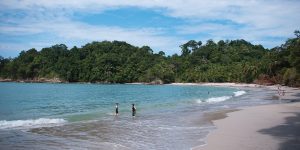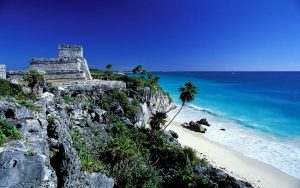Day 1 Santa Cruz Isl./Galapagos Islands
Very early this morning you will be transferred to the airport for your flight to Galapagos.
Your Galapagos Cruise include: Accommodation in selected cabin, all meals, Island sightseeing, Naturalist guides and lecture services in English, Snorkelling gear, shared transfers in the islands and from main hotels in Quito and Guayaquil.
There are two types of landings throughout your Galapagos tour:
Dry landing: guests step from the dinghy onto rocks or a dock.
Wet landing: as the dinghy edges onto a sandy beach, guests step into knee-deep water and wade ashore.
Please remember that the exact route and program may vary according to weather and ocean conditions and the wildlife we encounter.
On arrival, you will be met by the Majestic staff and transferred to the yacht. You will be shown to your cabin where you will have some time to settle in before lunch and a welcome briefing.
PM: Charles Darwin Station
The Charles Darwin Research Station is home to turtles ranging from 3-inches (new hatchlings) to 4-feet long. Subspecies of turtles interact with one another and many of the older turtles are accustomed to humans stretching out their heads for a photo opportunity. The babies are kept until they are about four years old and strong enough to survive on their own.
Day 2 Genovesa Isl./Galapagos Islands
AM: El Barranco
Also known as Prince Phillip’s Steps, El Barranco’s steep, rocky paths leads up to a high cliff-face. A marvelous view can be appreciated from here. This site is also home to palo santo vegetation as well as red-footed boobies, short-eared lava owls, Galapagos swallows, and Galapagos doves.
PM: Darwin Bay
This white sand coral beach heads a half mile trail (0.75km) that winds through mangroves filled with land birds. Nazca boobies, red-footed boobies, and swallow-tailed gulls can be spotted here. Further down the path are tidal pools where sea lions swim playfully. At the end is a spectacular view off a cliff.
Day 3 Rabida Isl./Galapagos Islands
AM: Rabida Island
Rabida Island (Jervis) is one of the most colorful and volcanically varied islands in the archipelago and a great snorkeling site. Its famous maroon sandy beach and stunning lookouts provide wonderful landscapes. The island is a birdwatcher’s delight. Some of the rarest species are in abundance, such as nine varieties of finches, large-billed flycatchers, Galapagos hawks and brown pelicans.
PM: Chinese Hat Islet
This small islet is located near the southeast coast of Santiago Island. Its name comes from the distinct shape of the islet’s summit. This small islet is a great location to view many geological formations such as lava tubes and lava flows.
Day 4 San Cristobal Isl./Galapagos Islands
AM: Witch Hill
Located on the northern coast, this eroded hill and its surroundings present one of the most picturesque beaches in the Galapagos with its white powdery sand and the abundance of animals. Wildlife includes sea turtles, rays, and various types of booby birds. The clear water provides an excellent opportunity for enjoying swimming and snorkeling.
PM: Lobos Island
The name of this island means “Sea Lion Island.” This appropriately named island is ripe with noisy, frolicking, jolly sea lions who will welcome you to their home with open, well, fins. This island also offers great snorkeling opportunities as well as the chance to see blue-footed and Nazca boobies.
Day 5 Depart San Cristobal Isl.
AM: Interpretation Center
The Interpretation Center was opened in 1998 as a phase of the project “Interpretation and Environment Education Project.” Visitors enjoy expositions on natural history, human history, and conservation. The conservation efforts represent the movement to protect the wildlife and natural environment through means of population and tourist control. The Interpretation Center has an outdoor stadium, audio-visual equipment, and meeting rooms.






















































